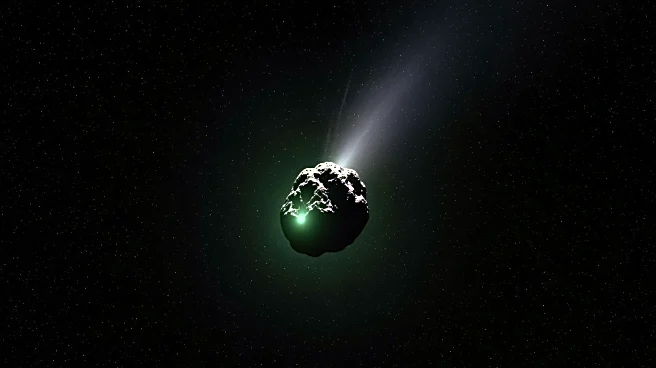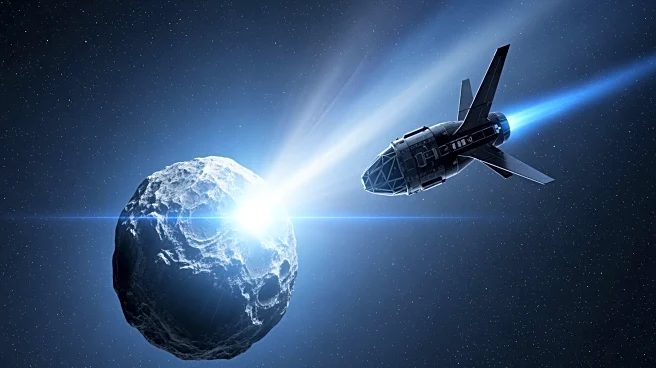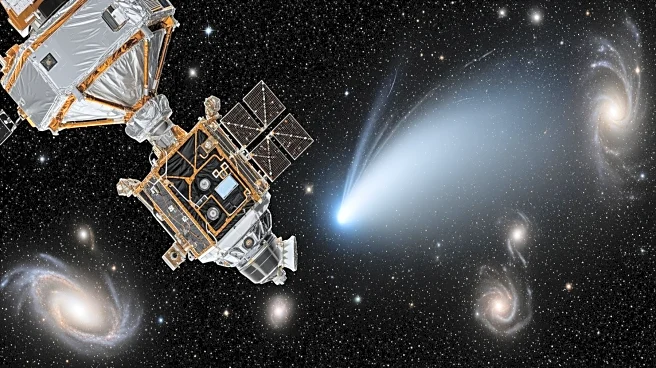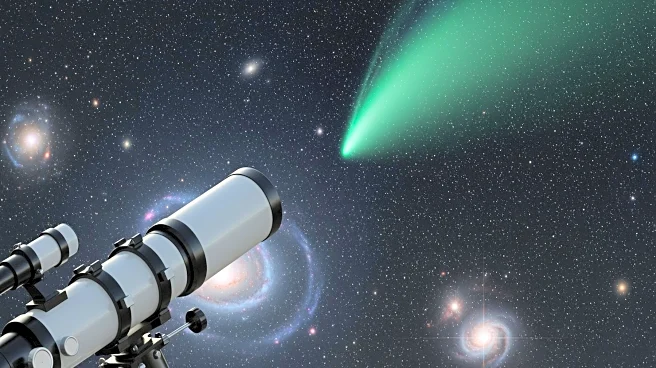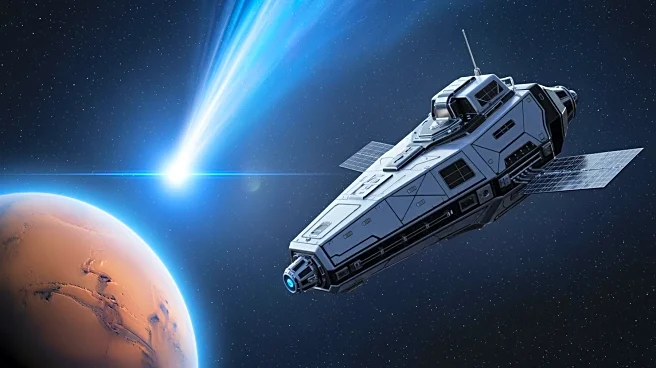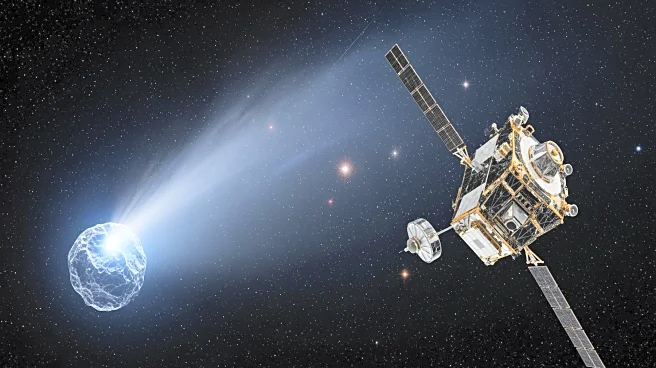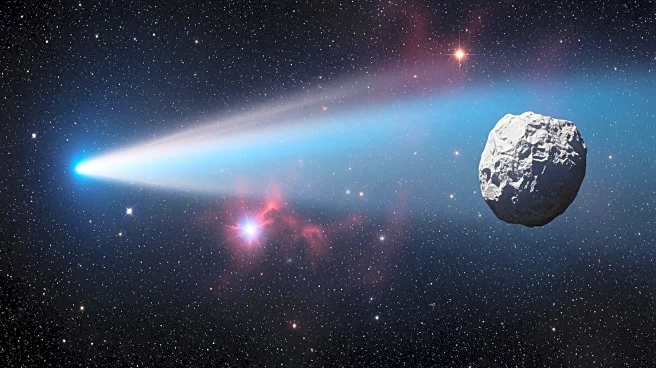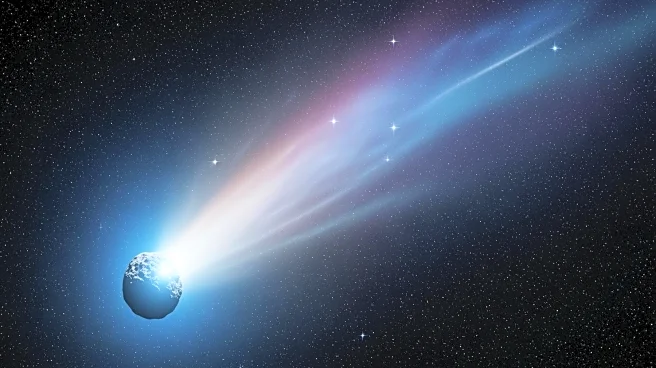What's Happening?
NASA scientists are closely monitoring the interstellar comet 3I/ATLAS, which has been exhibiting unusual behavior after passing its closest point to the Sun. The comet, discovered in July, is glowing
green and appears to be hiding its tail, a phenomenon that has intrigued researchers. Using the Discovery Telescope, researcher Qicheng Zhang from Lowell Observatory detected diatomic carbon particles in the comet, which glow green when exposed to ultraviolet light. Despite the comet's faint or hidden tail, Zhang assures that this is normal and not unusual. The comet has gained attention from various space agencies, including China's Tianwen-1 orbiter, which captured images of 3I/ATLAS during its flyby of Mars. Astrophysicist Avi Loeb has suggested that the comet's non-gravitational acceleration and its glow could indicate a technological signature, although NASA has not released certain images that could provide further insights.
Why It's Important?
The study of 3I/ATLAS is significant as it represents the third interstellar object recorded in our solar system, offering a unique opportunity to understand interstellar phenomena. The comet's unusual characteristics, such as its green glow and hidden tail, could provide insights into the composition and behavior of interstellar objects. The involvement of multiple space agencies highlights the global interest in understanding these cosmic visitors. The potential implications of the comet's behavior, including the possibility of it being an extraterrestrial probe, could challenge existing theories about interstellar objects and their interactions with our solar system.
What's Next?
Further observations and studies are expected as researchers continue to analyze data from various space missions. GOP Rep. Anna Paulina Luna has requested NASA to release specific observational data related to 3I/ATLAS, emphasizing the importance of advancing our understanding of interstellar visitors. The scientific community is likely to continue exploring the comet's characteristics, potentially leading to new discoveries about interstellar objects and their impact on our solar system.
Beyond the Headlines
The comet's behavior raises questions about the nature of interstellar objects and their potential technological origins. The debate over the comet's characteristics could influence future research and exploration strategies, encouraging scientists to consider alternative explanations for cosmic phenomena. The ethical implications of withholding data and images from public scrutiny may also be discussed, as transparency in scientific research is crucial for advancing knowledge.
